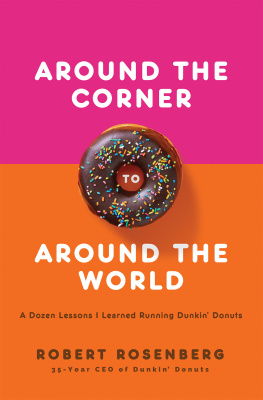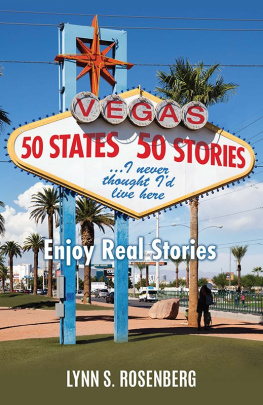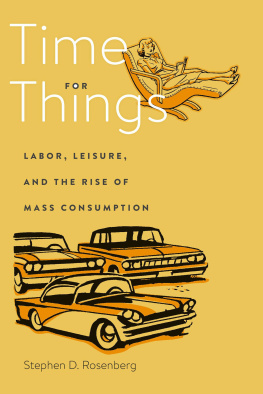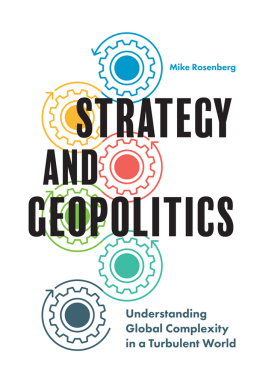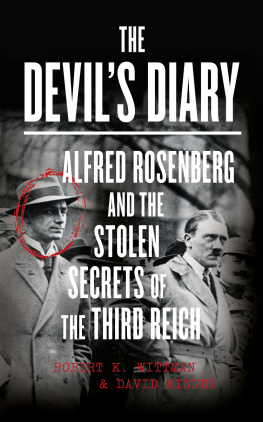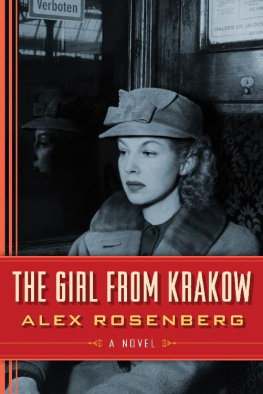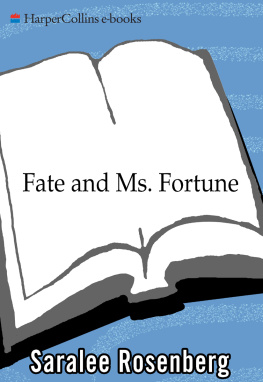Robert Rosenberg - Around the Corner to Around the World
Here you can read online Robert Rosenberg - Around the Corner to Around the World full text of the book (entire story) in english for free. Download pdf and epub, get meaning, cover and reviews about this ebook. year: 2020, publisher: Harpercollins Leadership, genre: Home and family. Description of the work, (preface) as well as reviews are available. Best literature library LitArk.com created for fans of good reading and offers a wide selection of genres:
Romance novel
Science fiction
Adventure
Detective
Science
History
Home and family
Prose
Art
Politics
Computer
Non-fiction
Religion
Business
Children
Humor
Choose a favorite category and find really read worthwhile books. Enjoy immersion in the world of imagination, feel the emotions of the characters or learn something new for yourself, make an fascinating discovery.
- Book:Around the Corner to Around the World
- Author:
- Publisher:Harpercollins Leadership
- Genre:
- Year:2020
- Rating:3 / 5
- Favourites:Add to favourites
- Your mark:
- 60
- 1
- 2
- 3
- 4
- 5
Around the Corner to Around the World: summary, description and annotation
We offer to read an annotation, description, summary or preface (depends on what the author of the book "Around the Corner to Around the World" wrote himself). If you haven't found the necessary information about the book — write in the comments, we will try to find it.
Around the Corner to Around the World — read online for free the complete book (whole text) full work
Below is the text of the book, divided by pages. System saving the place of the last page read, allows you to conveniently read the book "Around the Corner to Around the World" online for free, without having to search again every time where you left off. Put a bookmark, and you can go to the page where you finished reading at any time.
Font size:
Interval:
Bookmark:
2020 Robert M. Rosenberg
All rights reserved. No portion of this book may be reproduced, stored in a retrieval system, or transmitted in any form or by any meanselectronic, mechanical, photocopy, recording, scanning, or otherexcept for brief quotations in critical reviews or articles, without the prior written permission of the publisher.
Published by HarperCollins Leadership, an imprint of HarperCollins Focus LLC.
Book design by Pauline Neuwirth, Neuwirth & Associates.
ISBN 978-1-4002-2049-6 (eBook)
ISBN 978-1-4002-2048-9 (HC)
Epub Edition August 2020 9781400220496
Library of Congress Control Number: 2020941483
Printed in the United States of America
20 21 22 23 LSC 10 9 8 7 6 5 4 3 2 1
Information about External Hyperlinks in this ebook
Please note that the endnotes in this ebook may contain hyperlinks to external websites as part of bibliographic citations. These hyperlinks have not been activated by the publisher, who cannot verify the accuracy of these links beyond the date of publication
Contents
E very morning, six million people around the world start their day with a cup of Dunkin Donuts coffee. Thirsty customers in search of their favorite pick-me-up can find their fix in more than thirteen thousand stores and in more than forty countries. In the United States, the brand enjoys a 95 percent recognition rate among consumers. In 2008, head-to-head taste comparisons between Dunkins original brew and Starbucks blend, Dunkin was preferred 58 percent to 42 percent.
This was not always the case. From humble beginningsa single shop in Quincy, Massachusetts, in 1950Dunkin Donuts grew over the years into one of the worlds most beloved brands through sheer perseverance and grit, talent, and a little bit of luck. This memoir chronicles the trials and tribulations, the dizzying highs when we got it right and the heart-thumping near-death lows of when I got it wrong.
This is a story of a family business transforming from a small, regional diversified food service company into the worldwide, iconic brand it is today. More than anything else, it is a story of change. Sometimes it was a pivotal switch-up in management that affected all levels of the business, or merely a refinement in the menu that sent sales skyrocketing. Deceptively simple adjustments in the service delivery system transformed our retail concept in fundamental ways. A more sophisticated location and marketing strategy increased sales dramatically, while a new purchasing system saved our franchisees tens of millions of dollars. The fact is that our teamboth franchise owners and management togethercontinually adapted to an ever-changing consumer and competitive landscape. This adaptability enabled us to build this world-renowned brand that I had the good fortune to shepherd for more than thirty-five years.
It is my hope that this book will appeal to the millions of Dunkin Donuts consumers around the world as well as small-business owners, franchisees, and business leaders. Customers will enjoy a peek behind the curtain to learn the stories of how our delicious donuts, coffee, and other favorites like Munchkins, muffins, and frozen beverages came to be.
Since my time and exposure with this company parallels the mind-blowing growth of the fast-food business, as well as the franchise system of distribution, business readers are sure to find value in this tale as well.
Growing any business is not for the faint of heart; not in 1950 when Dunkin began, not during the years I was at the helm, 196398, and certainly not today. So to all those entrepreneurs building their own businesses today or contemplating buying a franchise, I would hope our successes and failures would be a valuable springboard and provide important lessons and helpful insightsor cautionary talesfor your own ventures.
Finally, I have written this memoir as an ode to the thousands of executives, staff, and franchise owners past and present who have built this wonderful business. It was their adaptability, courage, and genius that made Dunkin Donuts a legendary and dominant global brand.
This book is organized into six distinct eras spanning my thirty-five years at the helm, each revealing our unique response to the swiftly morphing conditions around us. Every chapter starts with an overview of events, followed by reflections on those events through four lenses. The first is strategy. Strategy is the controlling plan that sets out what an enterprise wishes to be, what it wishes to achieve, and the most important action steps it needs to take to marshal scarce resources in the achievement of its mission and objectives. The second lens is organization, which deals with the recruitment, retention, and motivation of the appropriate staff to achieve the strategy. The third is communication, the aim of which is to align all constituents enthusiastically behind the achievement of the strategy. The fourth and final category I call crisis management, where I parse the issues that posed either a threat or opportunity to the enterprise, requiring the attention of the CEO. In my experience, these are the four critical functions of an effective CEO.
Each chapter wraps with a lessons-learned section. Unfortunately, not all of these were learned when they could have been most useful. But after due reflection on three-and-a-half decades at the helm of a dynamically growing business, six years teaching as an adjunct in the graduate program of a leading entrepreneurial college, and decades as a board member of several well-known food service companies, Ive become convinced of the worth of this counsel.
BACKGROUND
On a beautiful sunny June day in 1963, I had a conversation with my father, William Rosenberg, that would change the trajectory of my life. At the time, I was a newly minted MBA, just twenty-five years old, barely two weeks postgraduation from Harvard Business School. On that life-changing day, my forty-seven-year-old father asked me to become president of his business, Universal Food Systems, a daunting responsibility for more reasons than you might guess.
He sat me down in his office, slipping immediately into full sales mode. Look, he said, Ive observed you over the years, and whether it be school, camp, or the army, youve always come out on topa leaderand Im sure you can do this as well.
Wonderful words to hear from my dad; still, I took a huge breath and asked for some time to think.
UNIVERSAL FOOD SYSTEMS
Universal Food Systems comprised a portfolio of eight small food service divisions with annual revenues of $6 million and earnings of $93,000. Up until that point in my life, the only thing I had managed were a couple of donut shopsreplacing managers for their summer vacationsand a short stint supervising a cafeteria. My fathers request was breathtaking and anxiety-producing, but not all that surprising. A few months previous, while still in business school, I had accompanied him to a meeting in New York City where he was trying to sell the business to a small private equity investor for $1.5 million. He quickly passed on our offer. I had the distinct impression that this prospective New York buyer was only one of many who had already passed on the deal.
My fathers one goalthe sale of the enterprise that would become Dunkin Donutswas to be a millionaire after taxes.
An eighth-grade dropout and product of the depression, my father had seen his father lose his small market in Boston to bankruptcy during the depression of the 1930s. These are trials I had not gone through, so I could only imagine how they must have scarred him as well as shaped every decision he made. I loved and respected my dad. I had sought his approval and approbation throughout my life.
From my earliest recollections, he had shared his business experiences with me. I vividly recall the day in 1947I was just nine years oldwhen he took me on my first airplane ride. It was a DC3 and we flew to Albany, New York, from Boston. His company was providing the industrial catering for the thousands of employees at the Watervliet Arsenal in Watervliet, New York. It seemed the employees were up in arms over the fact that he had raised the price of a cup of coffee from a nickel to a dime. My dads mission was to try to explain his reasoning and calm them down in hopes of saving his largest and most important account.
Next pageFont size:
Interval:
Bookmark:
Similar books «Around the Corner to Around the World»
Look at similar books to Around the Corner to Around the World. We have selected literature similar in name and meaning in the hope of providing readers with more options to find new, interesting, not yet read works.
Discussion, reviews of the book Around the Corner to Around the World and just readers' own opinions. Leave your comments, write what you think about the work, its meaning or the main characters. Specify what exactly you liked and what you didn't like, and why you think so.

